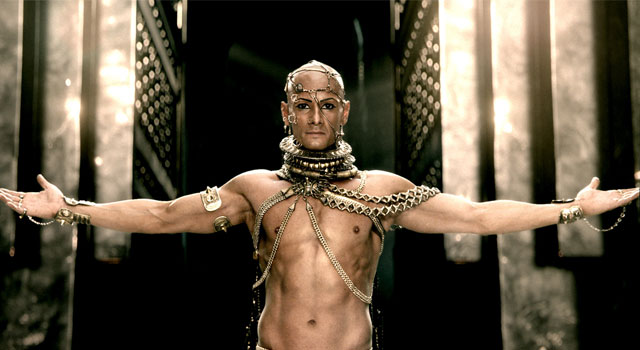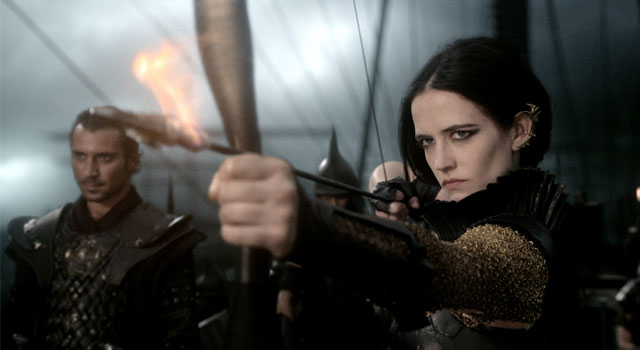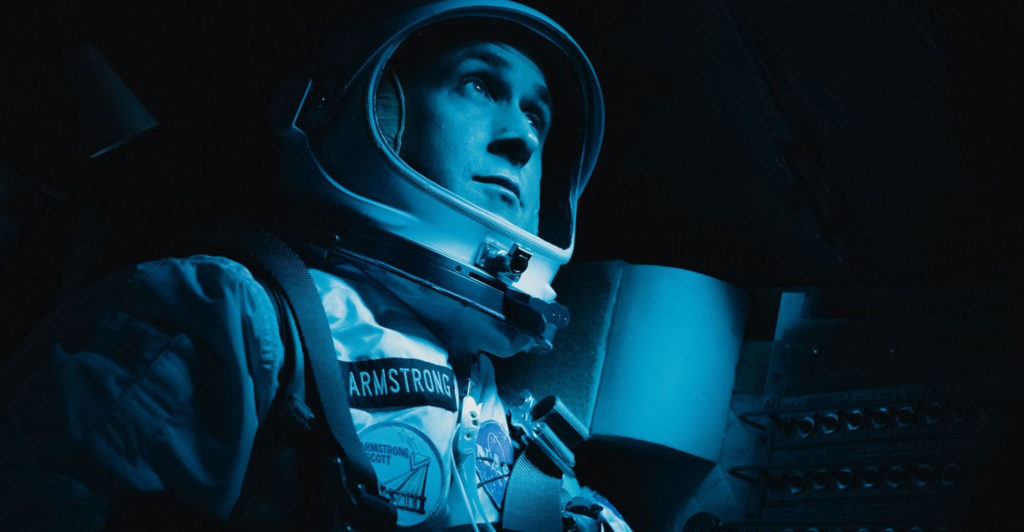
It’s taken nearly eight years, but at last we have a sequel to Zack Snyder’s 300, just in case anyone was asking for such a thing. Co-written and produced by Snyder, and directed by green hand Noam Murro, 300: Rise of an Empire is a timid and forgettable follow-up to a film that was, at its time, divisive yet memorable.
300: Rise of an Empire runs roughly in parallel to 300’s chronicle of the suicidal stand that Leonidas and his 300 Spartan warriors took against an invading Persian Army at the Hot Gates. This time around, the glory goes to the Athenians, led by a brilliant general and politician called Themistokles, as they spur with the Persian navy on the Aegean Sea. Needless to say, the new film hews as close to the historical record as the previous — in other words, not at all.
The film stumbles from its opening moments as Queen Gorgo of Sparta (played by Lena Headey, returning as the wife of Leonidas), promises a tidal wave of heroes’ blood in a clumsy expository voiceover that strives for grandeur and attains only pomposity. To cut a long story short, the gold-spangled, effete Persian king Xerxes (Rodrigo Santoro) is back to have his vengeance on the Greeks after Themi killed his dad Darius some years before during the Battle of Marathon.
If that’s not bad enough, Xerxes’ enormous navy is commanded by the ruthless Artemisia, a fearsome warrior and tactician who has her own reasons for wanting to make the Greeks suffer. Eva Green’s vampy performance as Artemisia is the single best thing of a film that wades in mediocrity for most of its 100-minute running time. Green’s Artemisia is charged with carnal energy and motivated by malice, yet there’s a hint of mischief as she purrs and growls through her often ridiculous lines.
Themistokles (played by young Aussie actor Sullivan Stapleton) is meant to be the hero as the leader of the six-packed Athenians, who’re as fond of running around nearly in the buff as their Spartan allies from 300. But his bland nobility is no match for the delectable evil of his battlefield adversary; he also cuts a far less mythic figure than Gerard Butler’s towering Leonidas in 300. Turning one of ancient Greece’s most fascinating figures into a modern action hero fighting for an “experiment” called “democracy” does him little justice.
300 is one of the two Zack Snyder films that I care for (the other being his Dawn of the Dead remake). It was, for its time, a tasty pulp of videogame kinetics, comic book aesthetics and ancient history. Its thick-brushed outlines, the cold and unnatural hues of its colour palette, unearthly CGI backdrops, and the bombast of the lines barked out by its cast felt perfect for its operatic treatment of the Battle of Thermopylae.

Framed as a rousing battle tale told to Spartan warriors about to charge into the Battle of Plataea, 300 was an original update on the sword-and-sandal genre that was cleverer (though maybe only slightly) than it was given credit for. The sequel is, by comparison, tired and rather silly. There’s much here that doesn’t make sense, including a bizarrely gratuitous sex scene that made the audience titter in the screening I attended.
Murro does a passable imitation of Snyder’s directorial style — down to the claret that sprays across the screen in 3D slow motion every time a vein is sliced or an artery slashed in one of the battles — but never finds a groove of his own. He handles some of the naval battles well, pitting outnumbered, nimble Greek vessels against a vast, lumbering Persian fleet.
Not only does Murro fail to set himself apart from Snyder’s direction, he struggles to differentiate Rise of an Empire from the many inferior films 300 has influenced over the past eight years. Part of the problem, perhaps, is that Snyder was working off strong source material in Frank Miller’s graphic novel 300. He lovingly translated the imagery to the big screen, effectively using the comic book as a storyboard, and drew on the same words from Herodotus and other classical sources that Miller used for his dialogue.
This time, Snyder and Murro were more or less left to their own devices because Miller has yet to complete his 300 follow-up, simply called Xerxes. The writing lacks the epic resonance of 300, the shots are unimaginatively framed and the narrative lacks the earlier film’s sense of urgency and heroic destiny. As the wolfish Artemisia bears down on the dull Greeks, you’re almost rooting for her to win. — (c) 2014 NewsCentral Media




